Addictive flavor and texture! The umami-packed common octopus from Fukushima
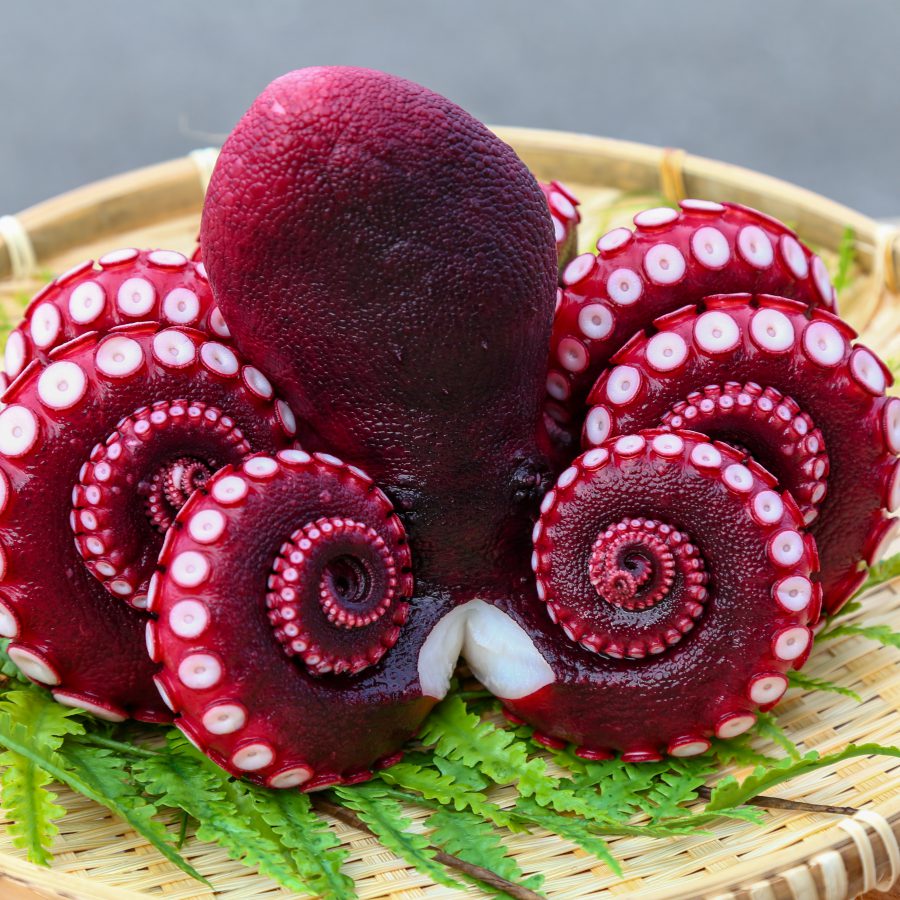
In Fukushima, octopuses are harvested all year round. In summer, giant Pacific octopus is commonly caught, while chestnut octopus is abundant from fall to spring, with common octopus being mostly caught in winter (November to February). Compared to the giant Pacific octopus, which contains more moisture and has a softer texture, the common octopus is generally considered to have firmer flesh. However, Joban-mono common octopus is characterized by its moderate firmness. The octopuses have a great flavor, with their muscular flesh packed with umami.
Maruroku Sato Suisan in Soma City is a company that produces processed products using their unique seasonings and methods. They have been focusing on the processing of common octopus for nearly 40 years and currently ship primarily to Toyosu Market. We spoke to Mr. Tomonori Sato, the fourth generation of Maruroku Sato Suisan and managing director, about the Joban-mono common octopus.
The processing of common octopus with a focus on appearance, taste, and texture
According to Sato-san, common octopus is rarely eaten raw; it is mostly boiled and then enjoyed as sashimi or in other dishes. Boiling them enhances their umami and gives them a better bite. The common octopus grown in the nutrient-rich waters of Joban has thick, substantial legs, which makes the tenderness of the inner flesh stand out even more. Sato-san says, “It’s my personal favorite among octopuses”.
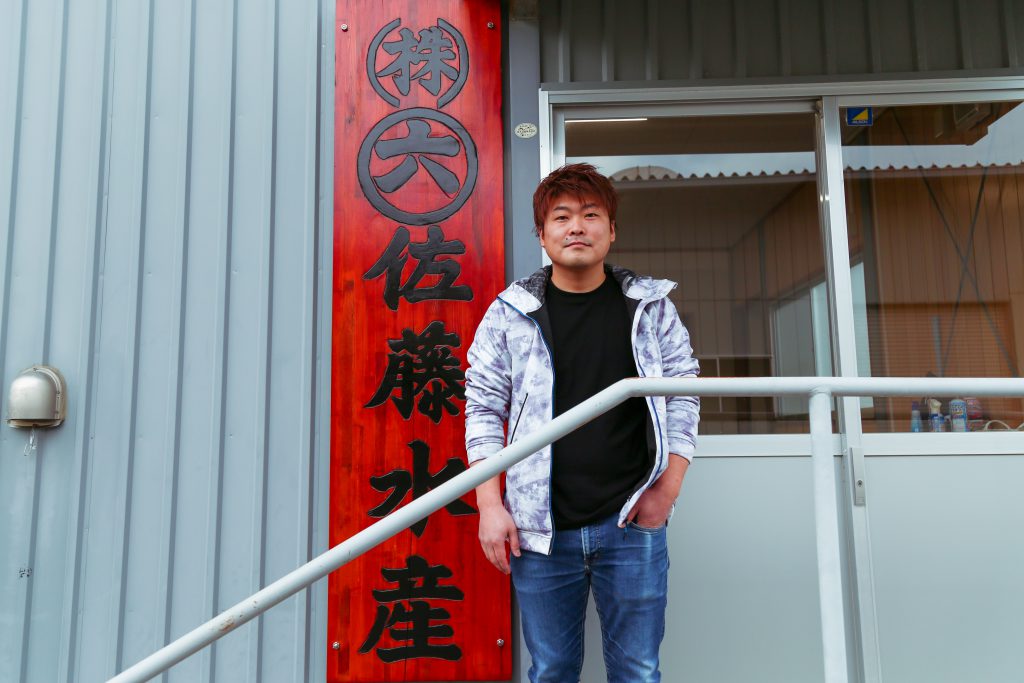
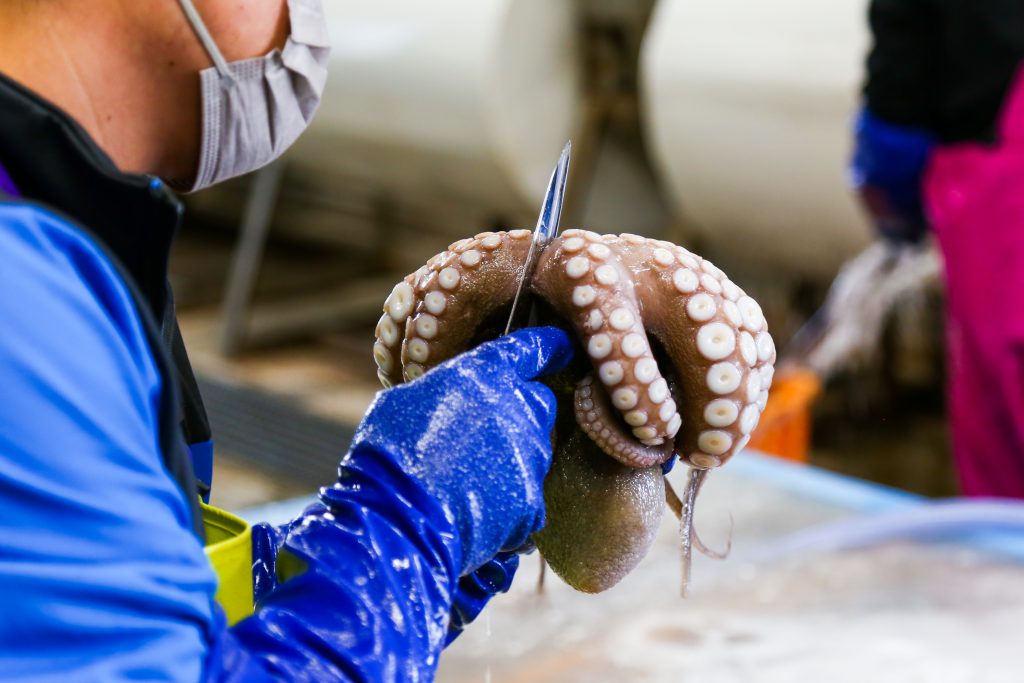
Maruroku’s commitment is to source common octopuses “while they are still alive”. By processing them while they are fresh, the appearance, taste, and texture are significantly improved. They also take their time rubbing the octopuses with salt to remove slime and soften them. Depending on the condition of the octopus, they rub it for one to two hours. After that, they meticulously brush to remove dirt from the suction cups and mouth.
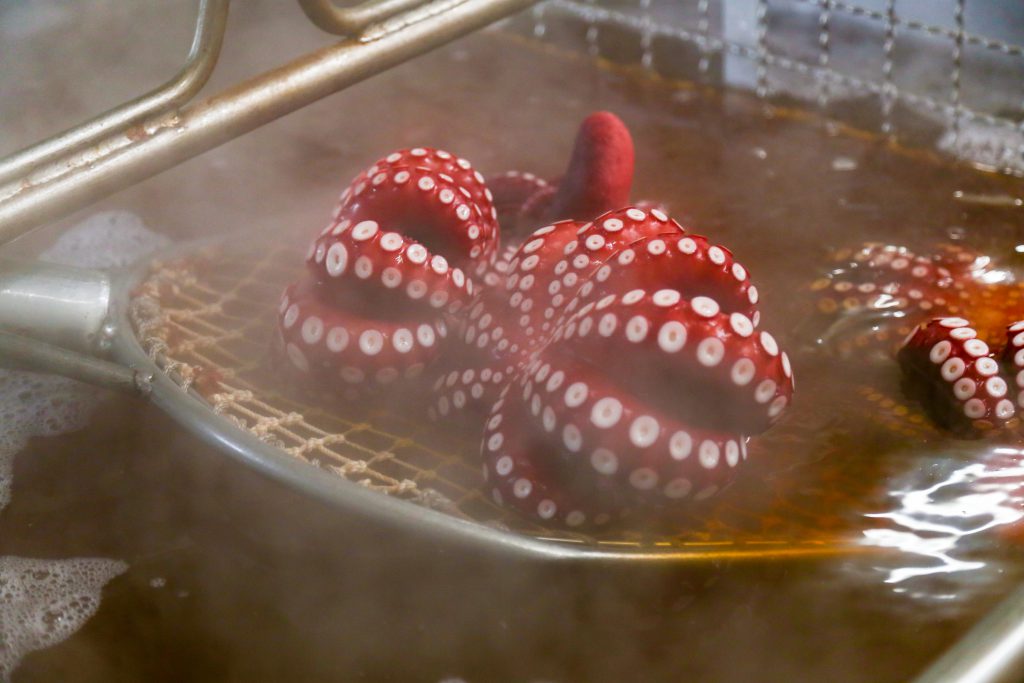
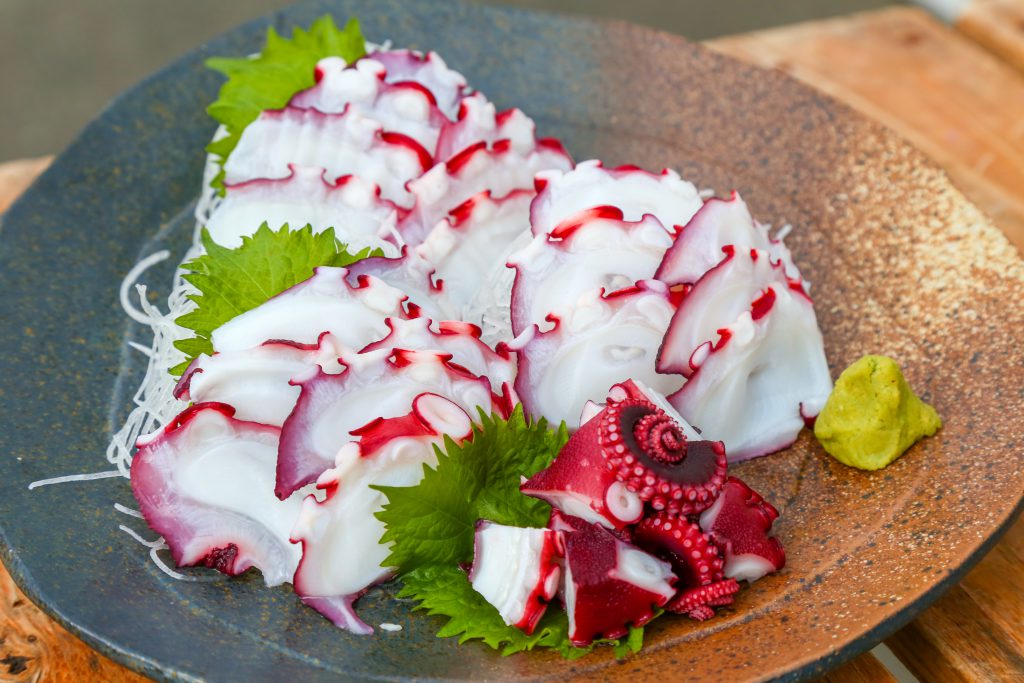
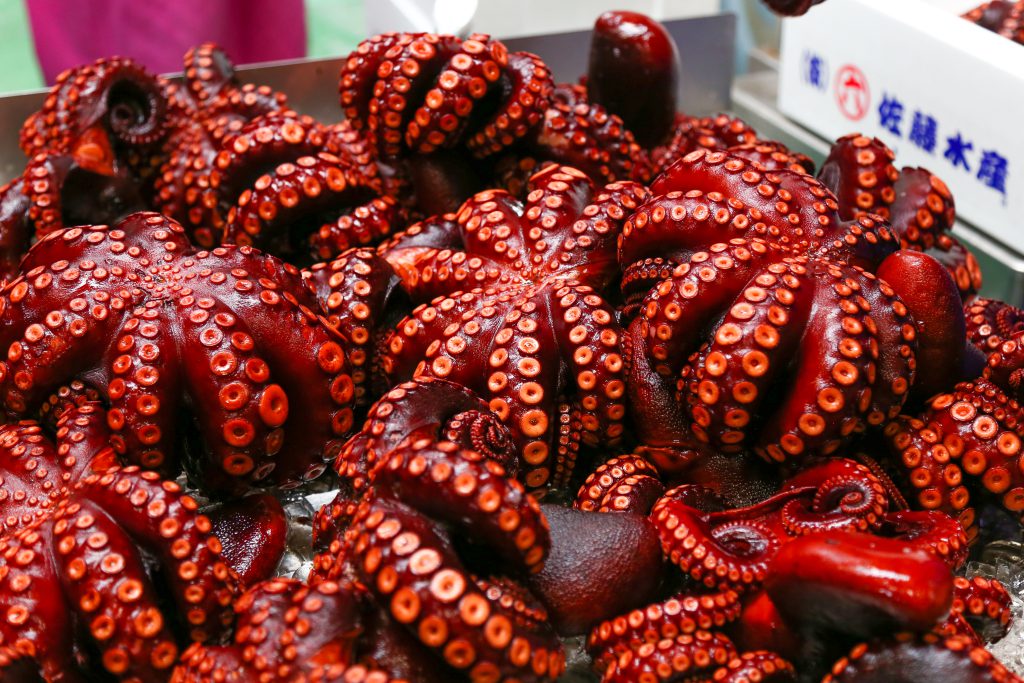
Maruroku’s common octopus has a crisp skin, while the center of the flesh is so tender that it seems almost rare. The secret to this firmness and texture is dipping the octopus in a diluted alum solution before boiling. To achieve the rare texture, they carefully monitor the boiling time and make fine adjustments each time, considering the size and quantity of the octopus.
Additionally, Maruroku’s common octopus has unique characteristics that set it apart from others. This is achieved through their unique processing method, which gives it a deep brown color. According to Sato-san, “We are probably the only company in Japan using this processing method”. There is a high demand from Toyosu Market, where “this brown color has always been recognized as the trademark of Maruroku”.
A strong commitment to using local fish
Maruroku Sato Suisan, located near Soma Port, is one of the companies that suffered significant damage from the Great East Japan Earthquake.
At the time, the factory was almost completely washed away by the tsunami, but it was rebuilt in the same location. While many of his competitors chose to close down their businesses, it was the president’s strong desire to “work with the fish of Soma” that encouraged him to reopen his business. Though there were long periods of hardship, they can now ship at prices comparable to those in other prefectures.
At the end of the interview, we asked Sato-san once again about the appeal of Joban-mono seafood. The reply we got was, “It’ll be quicker if you just eat it”. This comment shows his confidence in the quality of the seafood they handle, including the common octopus.
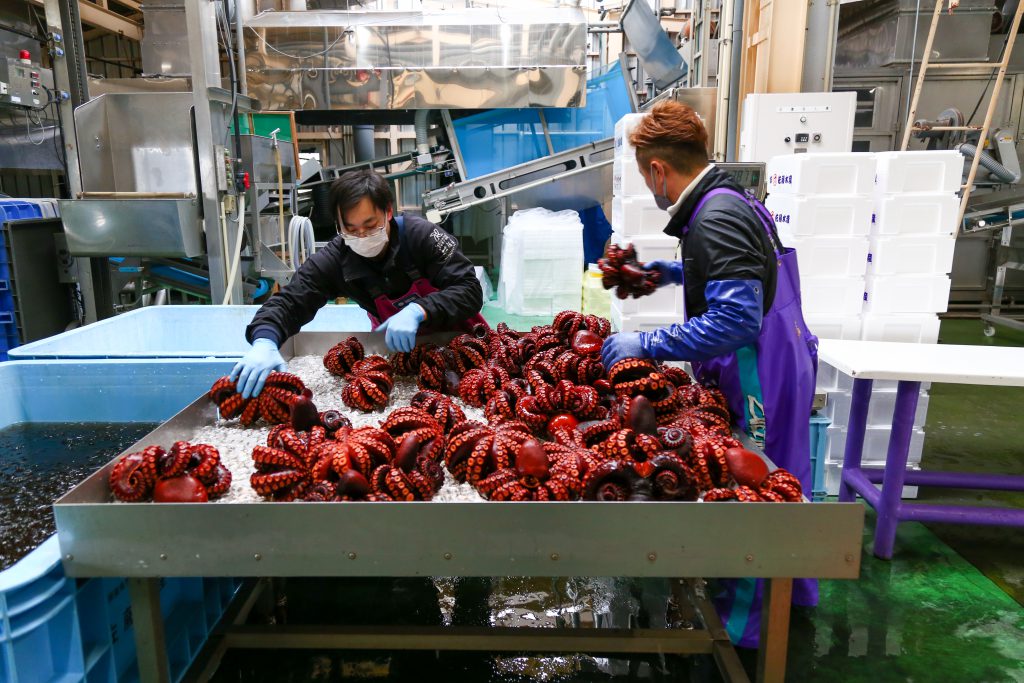
●Maruroku Sato Suisan
Address:88 Nigouta, Obama, Soma City, Fukushima Prefecture
Tel:0244-38-8046 (Opening hours: 10 AM to 3 PM)
Closed:Tuesdays and the day before a public holiday
